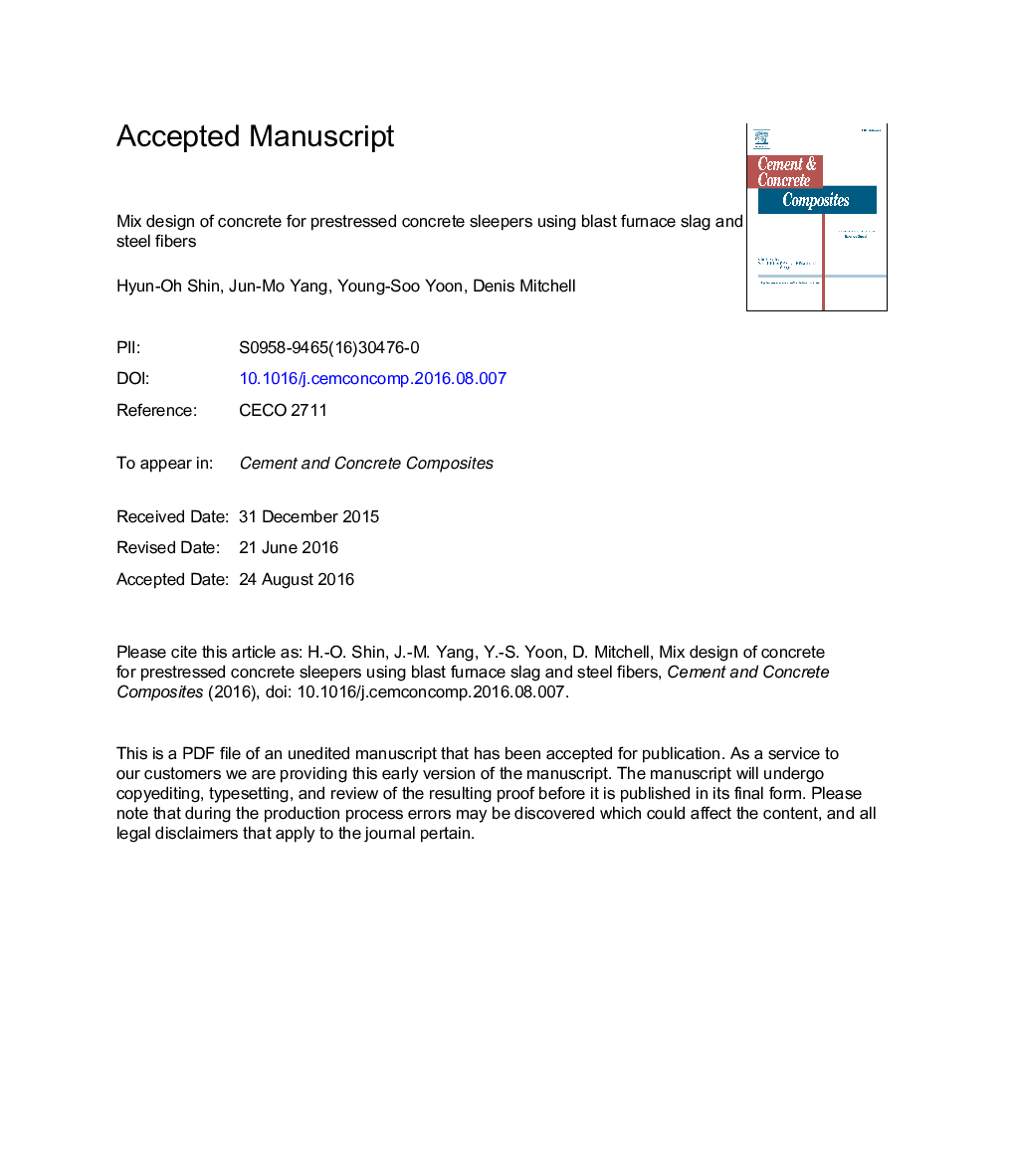| کد مقاله | کد نشریه | سال انتشار | مقاله انگلیسی | نسخه تمام متن |
|---|---|---|---|---|
| 5436962 | 1509659 | 2016 | 37 صفحه PDF | دانلود رایگان |
عنوان انگلیسی مقاله ISI
Mix design of concrete for prestressed concrete sleepers using blast furnace slag and steel fibers
ترجمه فارسی عنوان
مخلوط کردن بتن را برای تخته های پیش ساخته بتن با استفاده از سرباره کوره های انفجاری و الیاف فولادی
دانلود مقاله + سفارش ترجمه
دانلود مقاله ISI انگلیسی
رایگان برای ایرانیان
کلمات کلیدی
خواب آلودگی پیش ساخته شده، سرباره کوره انفجار گرانول، فیبر فولاد، مخلوط کردن، خاصیت مکانیکی، عملکرد طول عمر،
موضوعات مرتبط
مهندسی و علوم پایه
سایر رشته های مهندسی
مهندسی صنعتی و تولید
چکیده انگلیسی
The application of ground granulated blast furnace slag (GGBFS) and steel fibers in prestressed concrete railway sleepers was investigated in this study. The use of GGBFS was considered as an eco-friendly material aimed at reducing CO2 emissions and energy consumption as well as to enhance the durability performance of railway sleepers. Steel fibers improves the durability and structural performance in terms of crack control and reduction of spalling and can replace shear reinforcement. The mix proportions of the concrete incorporating GGBFS (56% GGBFS) and GGBFS with steel fibers (56% GGBFS and 0.75% steel fibers) were determined through a series laboratory tests and a life cycle assessment. These mixes satisfied the requirements of the Korean Railway Standard and resulted in improved flexural capacity as well as less CO2 emissions compared with current railway sleepers. Using these mixes, a total of ninety prestressed concrete sleepers were produced in a factory under the same manufacturing process as current railway sleepers, and their mechanical properties as well as durability performance were evaluated. The mix with partial replacement of Type III Portland cement by GGBFS showed an improved resistance to chloride ion penetration and freeze-thaw cycles compared with the concrete used for current railway sleepers. However, these mixes were more vulnerable to carbonation. The mix with GGBFS and steel fibers (mix BSF) showed a slightly better durability performance than the mix with GGBFS only (mix BS), including better carbonation and freeze-thaw resistances. The mix BSF showed decreased chloride ion penetration depth than mix BS but showed a slightly higher chloride ion diffusion coefficient.
ناشر
Database: Elsevier - ScienceDirect (ساینس دایرکت)
Journal: Cement and Concrete Composites - Volume 74, November 2016, Pages 39-53
Journal: Cement and Concrete Composites - Volume 74, November 2016, Pages 39-53
نویسندگان
Hyun-Oh Shin, Jun-Mo Yang, Young-Soo Yoon, Denis Mitchell,
